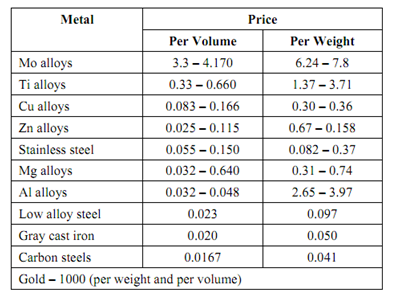Non-Ferrous Materials
Modern technology has been highly dependent upon non-ferrous and alloys for in certain cases they present the advantages of high strength and low weight and for certain other cases they surpass the mechanical strength of ferrous metals. In certain cases the non-ferrous meals like copper and aluminium alloys have no alternative in wide range of steel. Electrical conduction and aircraft bodies are examples. A jet turbine engine is a good example of application of these materials. A typical engine of this type contains 38% titanium, 12% chromium, 37% nickel, 6% cobalt, 5% aluminium, 1% niobium and 0.02% tantalum. Though steel is the largest consumed metal, good amounts of non-ferrous metals are coming into demand for mechanical, electrical, elevated temperature and corrosion resistance. Typically aluminium alloys are used for cooking utensils, aircraft bodies and as building materials, copper is used as electrical conductor in electrical machines and power transmissions, copper alloys are also used at tubing wherever good thermal conductivity is desired. And there are several other examples.
In Table the prices of several metals was compared with gold price as base at 1000. Comparing these prices one must be careful that the densities of various metals and their alloy will vary widely. The application of material generally can be seen in the machine and structure as its volume and not as weight. Table compares the prices on weight basis. Table compares the prices on the basis of both weight and volume.
Table: Comparison of Prices of Various Non-ferrous Alloys
